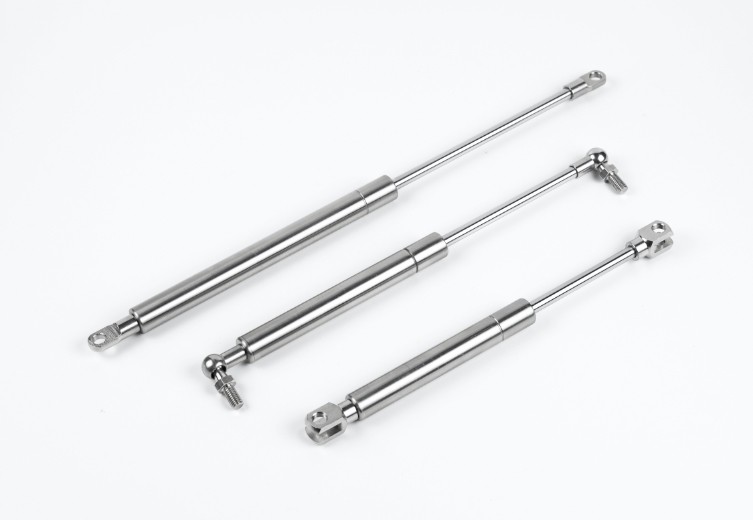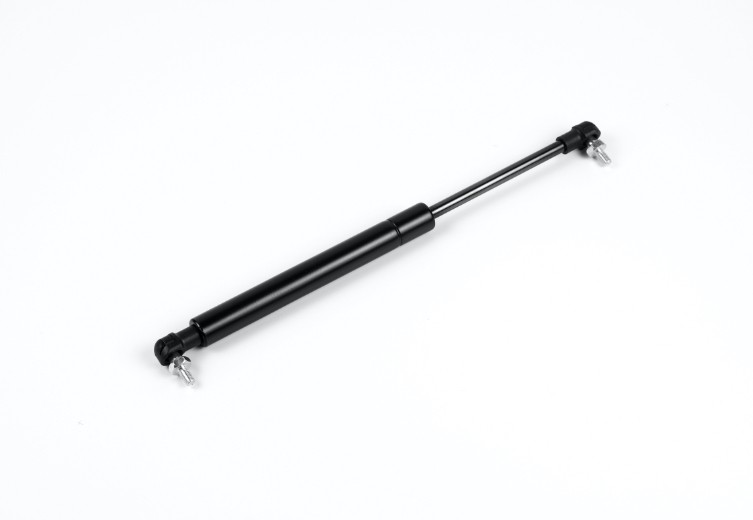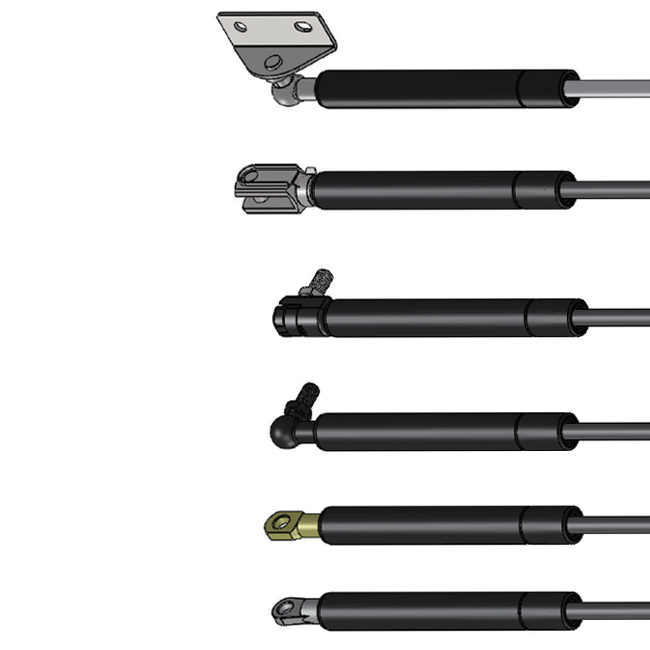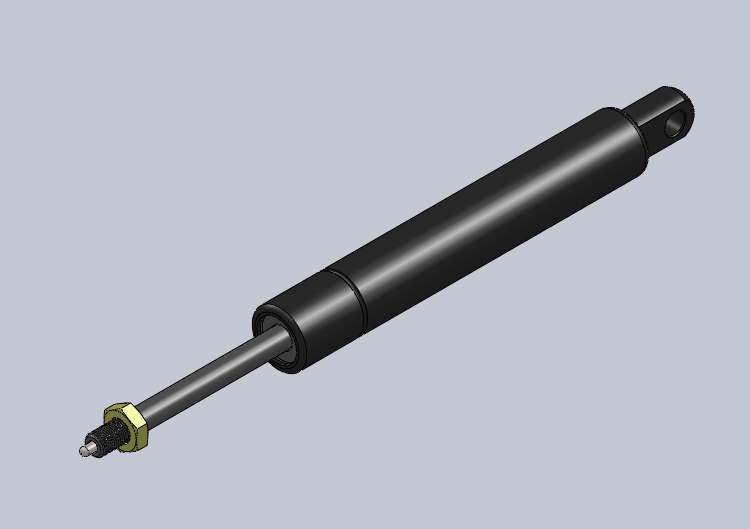That sudden slam when opening equipment covers isn't just annoying - it can damage your machinery. The solution lies in choosing the right gas spring.
Damped gas springs slow movement to 0.1mm/s using 65% oil filling and progressive resistance, while standard versions focus only on force support without speed control - making each suitable for completely different applications.
They look the same but different interior. Let's examine these critical differences in detail.
How Does the Internal Design Differ? The Oil Volume Factor
The secret lies in the fluid dynamics.
Damped gas springs contain 65% oil by volume (versus only using oil as lubricant in standard versions) to create hydraulic resistance during extension - while both types use similar nitrogen gas charges for basic force generation.
Key Component Differences
| Component | Damped Gas Spring | Standard Gas Spring |
|---|---|---|
| Oil Volume | 65% cylinder volume | <15% cylinder volume |
| Primary Fluid | High-viscosity damping oil | Light lubricating oil |
| Gas Pressure | 50-200 PSI (lower due to oil) | 100-300 PSI (higher) |
| Piston Design | Precision metering orifices | Simple check valve |
Our DS-series uses patented oil metering channels for consistent 0.1mm/s speed.
What About Performance Characteristics? Force vs Control
They solve different engineering challenges.
Damped springs prioritize controlled motion (0.1-5mm/s) with moderate forces (50-500N), while standard versions deliver higher forces (100-2000N) with unrestricted movement speeds over 100mm/s.
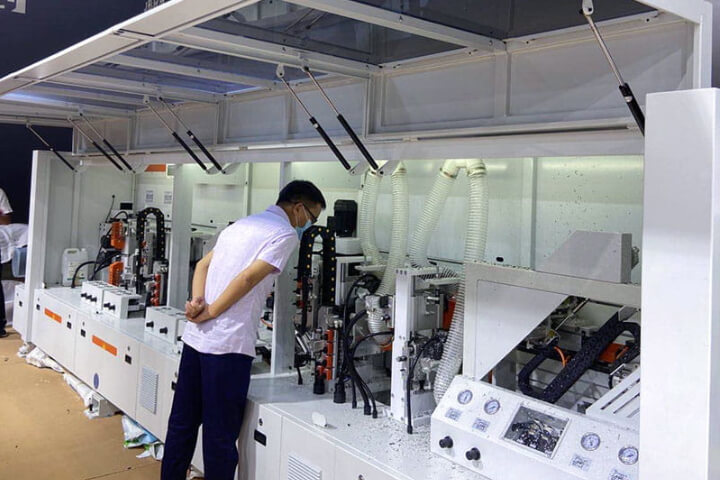
Performance Comparison Table
| Parameter | Damped Gas Spring | Standard Gas Spring |
|---|---|---|
| Extension Speed | 0.1-5 mm/s (controlled) | 50-300 mm/s (unrestricted) |
| Max Force | 30-80% lower than same size standard | Full force potential |
| Progression Rate | 1.4-2.5 (higher) | 1.1-1.8 (lower) |
| Stroke Efficiency | 85-92% (oil displacement) | 95-98% (gas dominated) |
Case study: Our DG-450 reduced hospital bed panel speed from 200mm/s to 3mm/s.
Where Should You Use Each Type? Application Guidelines
Choosing wrong can create safety hazards.
Use damped springs for slow-motion lids (medical equipment, machinery guards) where control matters most, and standard springs for pure force applications (chair lifts, hatch supports) where speed isn't critical.

Application Decision Guide
| Application Need | Recommended Type | Why? |
|---|---|---|
| Slow cabinet door closing | Damped | Prevents slamming |
| Engine hood support | Standard | Only needs force assistance |
| Medical imaging equipment | Damped + position lock | Precision movement required |
| Vehicle tailgates | Dynamic damped (special) | Works at all angles |
Our engineers can help select the perfect type - just share your load and motion requirements.
What About Special Cases? Dynamic Damping Solutions
Standard damped gas springs fail in certain orientations.
For horizontal or inverted applications where oil pools away from the piston, dynamic damped springs use floating separators or dual chambers to maintain damping at all angles - crucial for automotive and aerospace uses.
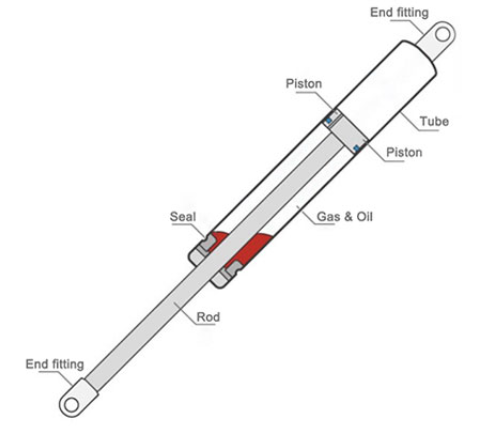
Special Application Solutions
- Horizontal Mounts: Twin-tube damper (our DD-H series)
- Frequent Inversion: Free-floating piston design
- High-Cycle Needs: Reinforced wiper seals (50,000+ cycles)
- Extreme Temperatures: Synthetic oils (-40°C to +150°C)
Recent BMW tailgate project required our 360° damping solution.
Conclusion
Understanding damped versus standard gas springs prevents equipment damage and safety issues - choose controlled motion when needed, pure force when speed doesn't matter.

